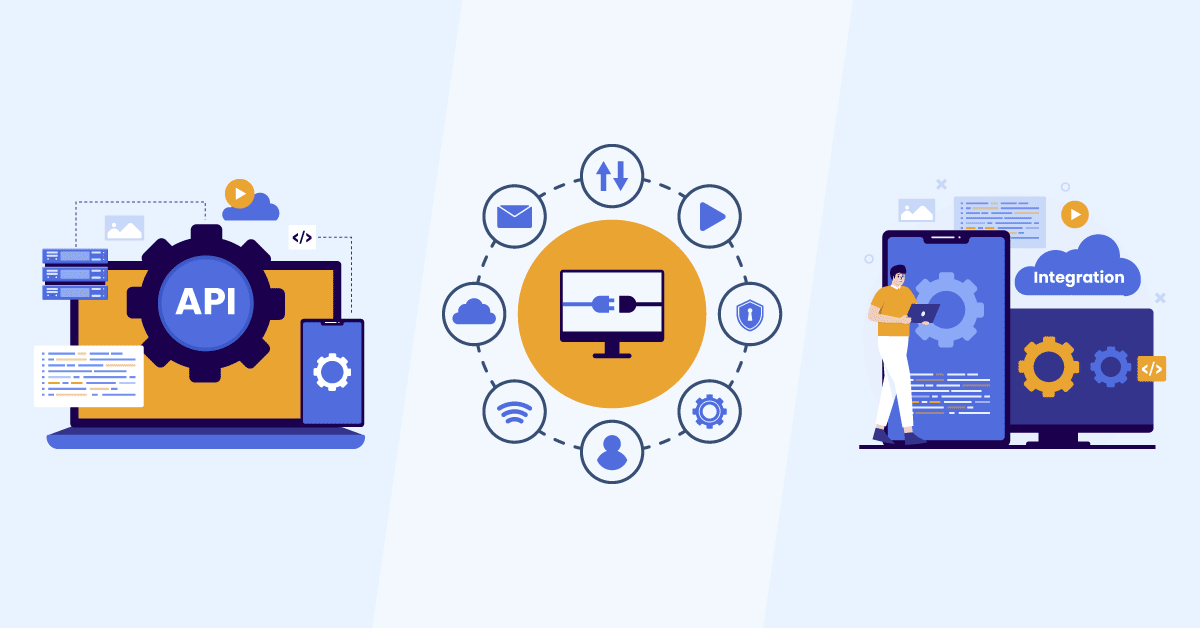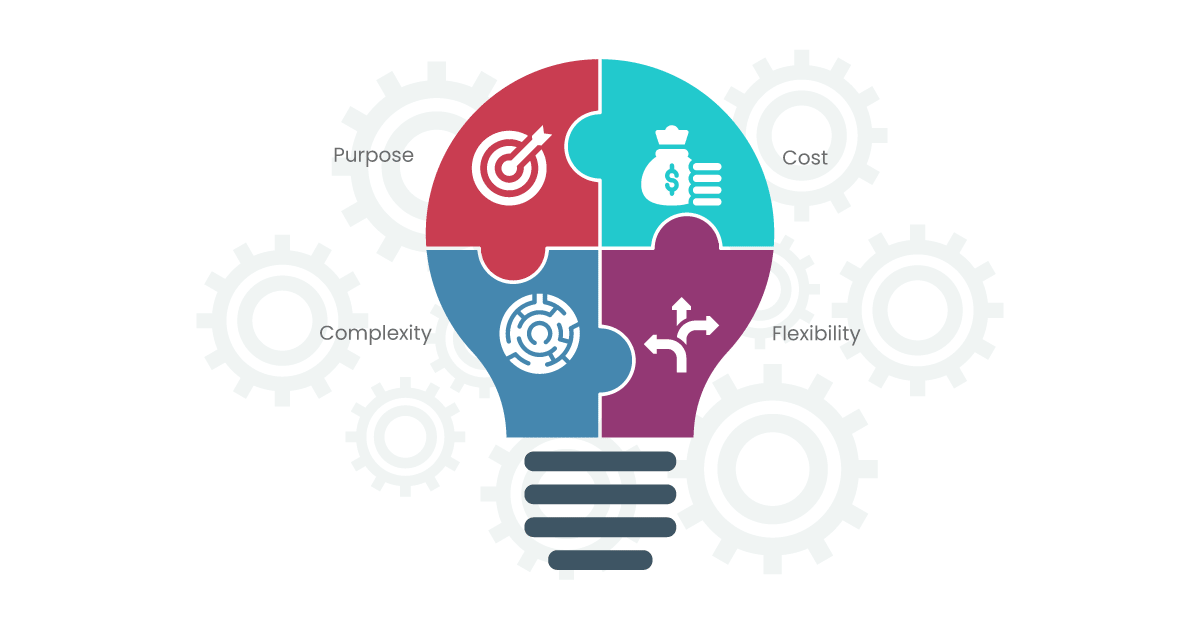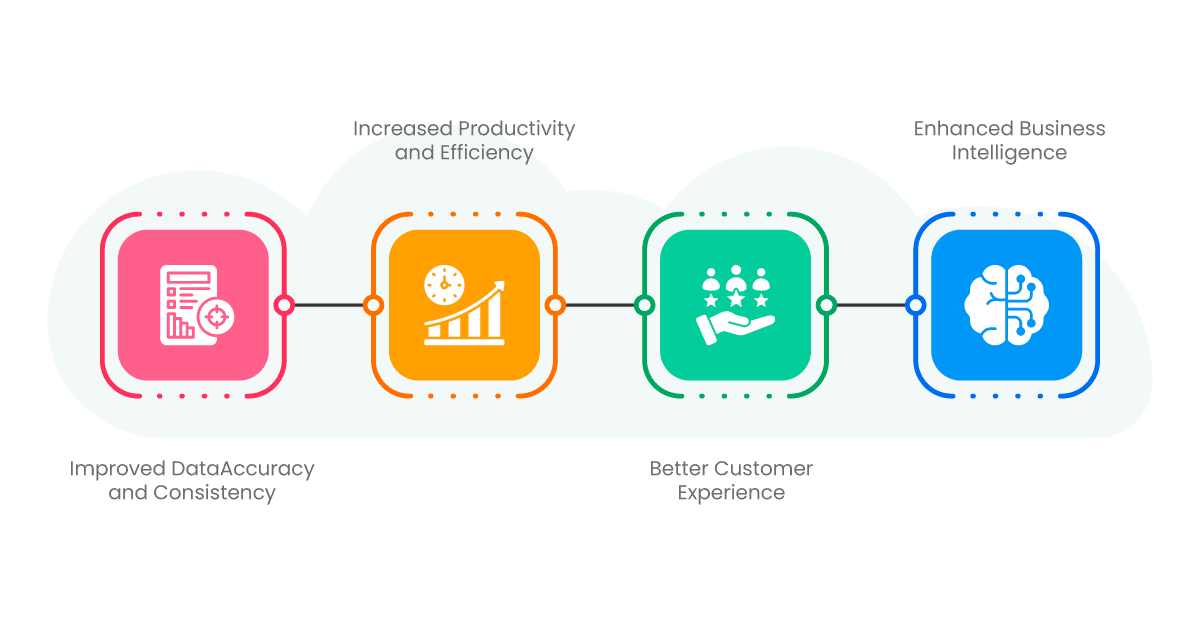The world of technology has been rapidly evolving, and one of the most significant changes we’ve seen in recent years is the emergence of APIs, connectors, and integration applications. These terms are often used interchangeably, but they have distinct differences that can impact how businesses use them to enhance their operations. In this blog, we’ll explore what these terms mean, how they differ, and their impact on businesses.
Aonflow iPaaS – Free for First 3 Months!
Build and run up to 1,500 transactions monthly with no cost. No payment info needed!
What is an API?
An API, or Application Programming Interface, is a set of protocols and tools that allow two or more applications to communicate with each other. APIs essentially act as a bridge between different software applications, allowing them to exchange data and interact with each other. In simpler terms, an API is like a waiter at a restaurant who takes orders from the customer and passes them on to the kitchen, bringing the food back to the customer once it’s ready.
APIs come in different types, including REST APIs, SOAP APIs, and GraphQL APIs. REST APIs, for instance, are widely used in web applications and mobile apps to transfer data between the client and server. SOAP APIs, on the other hand, use XML as their messaging format and are primarily used in enterprise applications.
APIs are used in many applications, such as social media platforms, e-commerce websites, and mobile apps. For instance, when you use a mobile app to book a ride, the app communicates with the ride-sharing platform’s API to retrieve information such as available drivers, ride fares, and other data to provide the best user experience.
What is a Connector?
A connector, sometimes referred to as a data connector, is a piece of software that allows different applications to connect and exchange data. Connectors are typically pre-built and come with pre-configured settings that simplify integration between applications. Connectors are often used in situations where businesses need to integrate data between two applications without the need for custom code.
For instance, if you use an email marketing platform like Mailchimp to send marketing emails to your customers, you can use a connector to automatically pull data from your e-commerce platform and sync it with Mailchimp. This way, you don’t have to manually export data from your e-commerce platform and import it into Mailchimp, which saves you time and effort.
Connectors offer several benefits, such as:
- Simplified Integration: Connectors eliminate the need for custom code, which can save time and resources.
- Improved Efficiency: Connectors can automate workflows and reduce manual data entry, leading to improved efficiency.
- Cost-Effective: Connectors are typically less expensive than building custom integrations with APIs.
- Easy to Use: Connectors are designed to be simple to use and require little to no technical expertise.
- Rapid Deployment: Since connectors are pre-built, they can be quickly deployed, allowing businesses to start using them immediately.
What is an Integration Application?
An integration application, sometimes referred to as an integration platform, is a software application that enables businesses to connect and integrate different applications and systems. Integration applications typically offer a range of features that simplify the process of integrating different applications, including connectors, data mapping, and workflow automation.
Integration applications can be used in different scenarios, such as integrating on-premise and cloud-based applications, integrating data from multiple sources, and automating workflows between applications. For instance, an integration application allows you to automate workflows between different applications, such as syncing data between your CRM and project management tools.
Integration applications typically offer the following features:
- Pre-built Connectors: Integration applications come with pre-built connectors that allow businesses to connect to different applications and systems. This saves time and resources by eliminating the need for custom code.
- Workflow Automation: Integration applications allow businesses to automate workflows by creating triggers and actions based on specific events. This can save time and improve efficiency by reducing manual data entry.
- Data Mapping: Integration applications provide tools for mapping data between different applications and systems. This ensures that data is properly formatted and consistent across all applications.
- Business Process Management: Integration applications provide tools for managing business processes, such as order fulfillment, invoicing, and more.
- Real-Time Data Sync: Integration applications can provide real-time data synchronization between different applications and systems. This ensures that businesses have access to the most up-to-date information.
Integration applications are a cornerstone of modern business operations, allowing disparate software systems to communicate seamlessly and collaboratively. These applications, often cloud-based and accessible through subscription models, play a pivotal role in enhancing efficiency, productivity, and the overall customer experience.
How do APIs, Connectors, and Integration Applications differ?
While APIs, connectors, and integration applications all play a role in connecting different applications and systems, they differ in several ways, including:
Purpose
The purpose of APIs is to allow applications to communicate with each other and exchange data. APIs are typically used by developers who build custom applications or integrate existing applications.
Connectors, on the other hand, are designed to simplify the process of integrating data between two applications. Connectors are pre-built and come with pre-configured settings that eliminate the need for custom code.
Integration applications, on the other hand, offer a range of features beyond just connecting applications, such as data mapping, workflow automation, and business process management.
Flexibility
APIs are highly flexible and can be customized to meet specific business needs. Developers can use APIs to build custom integrations between applications, giving them more control over how data is transferred between applications.
Connectors, on the other hand, are less flexible since they come with pre-configured settings. However, they offer a faster and simpler way to integrate data between two applications.
Integration applications offer a balance between flexibility and ease of use. They provide a range of features that allow businesses to customize their integrations and automate workflows, without the need for custom code.
Complexity
APIs can be complex to use and require a certain level of technical expertise to build and integrate applications. APIs also require additional development time and resources to build custom integrations.
Connectors, on the other hand, are designed to be simple to use and require little to no technical expertise. They offer a fast and easy way to integrate data between two applications, without the need for custom code.
Integration applications can be more complex than connectors but offer a range of features that simplify the process of integrating different applications. Integration applications can automate workflows, handle complex data mappings, and provide business process management tools.
Cost
APIs can be costly to develop and maintain since they require additional development time and resources. Additionally, some APIs may charge fees for accessing their services or limit the number of requests that can be made.
Connectors are typically less expensive than building custom integrations with APIs. Many connectors are available for free or at a low cost, making them an affordable option for businesses.
Integration applications are typically cloud-based and offered as a subscription service. They can vary in cost depending on the features and level of customization needed. Some integration applications offer free or low-cost plans with limited features, while others may require a higher investment for more advanced features and integrations.
Why are APIs, Connectors, and Integration Applications important?
APIs, connectors, and integration applications play an essential role in modern business operations. They enable businesses to connect and integrate different applications, improving productivity and efficiency. Some of the benefits of APIs, connectors, and integration applications include:
Improved Data Accuracy and Consistency: By connecting different applications and systems, APIs, connectors, and integration applications can ensure that data is accurate and consistent across all applications. This can help businesses avoid data entry errors and ensure that they have access to the most up-to-date information.
Increased Productivity and Efficiency: By automating workflows and reducing manual data entry, APIs, connectors, and integration applications can improve productivity and efficiency. This can free up time for employees to focus on more strategic tasks, leading to better business outcomes.
Better Customer Experience: By integrating different applications, businesses can provide a better customer experience. For example, integrating a CRM with an e-commerce platform can enable businesses to provide personalized product recommendations based on a customer’s purchase history.
Enhanced Business Intelligence: By integrating different applications and systems, businesses can gain a better understanding of their operations and customer behavior. This can provide valuable insights that can help businesses make better decisions and improve their bottom line.
Aonflow is the leading integration platform.
You can kick-start by integrating your first-ever workflow in just a matter of minutes.
How does iPaaS bring APIs, Connectors, and Integration Applications together, in one place?
iPaaS brings them all together by providing a centralized platform for businesses to manage their integrations. iPaaS is designed to provide businesses with a flexible and scalable solution for integrating their applications and systems, regardless of the complexity of their IT environment.
iPaaS provides a range of features that allow businesses to create, manage, and automate their integrations. Some of the key features of iPaaS include:
Pre-built Connectors: iPaaS platforms come with pre-built connectors that allow businesses to connect to a wide range of applications and systems. These connectors are typically designed to work with popular applications, such as Salesforce, Shopify, and more.
API Management: iPaaS platforms provide tools for managing APIs, including API gateway, API lifecycle management, and API analytics. This allows businesses to securely expose their APIs and manage their entire API ecosystem.
Integration Application Support: iPaaS platforms like Aonflow support a wide range of integration applications, which allows businesses to leverage their existing integration applications and workflows, while also providing a centralized platform for managing these integrations.
Data Mapping and Transformation: iPaaS platforms provide tools for mapping and transforming data between different applications and systems. This ensures that data is properly formatted and consistent across all applications.
Workflow Automation: iPaaS platforms allow businesses to automate workflows by creating triggers and actions based on specific events. This can save time and improve efficiency by reducing manual data entry.
Real-time Data Synchronization: iPaaS platforms can provide real-time data synchronization between different applications and systems. This ensures that businesses have access to the most up-to-date information.
Final thoughts
In today’s fast-paced business environment, the ability to seamlessly integrate different applications and systems is crucial for success. APIs, connectors, and integration applications are all key components of the integration process, each with its own unique capabilities and benefits.
As businesses continue to adopt new technologies and expand their digital footprint, the importance of integration will only continue to grow. Leveraging these tools and platforms can help businesses streamline their workflows, reduce costs, and improve efficiency, ultimately allowing them to focus on what matters most – delivering value to their customers.
With iPaaS, businesses can quickly and easily connect to a wide range of applications and systems using pre-built connectors, or create custom integrations using APIs. iPaaS also provides tools for mapping and transforming data between different applications, ensuring that data is properly formatted and consistent across all systems.
Aonflow iPaaS – Free for First 3 Months!
Build and run up to 1,500 transactions monthly with no cost. No payment info needed!


